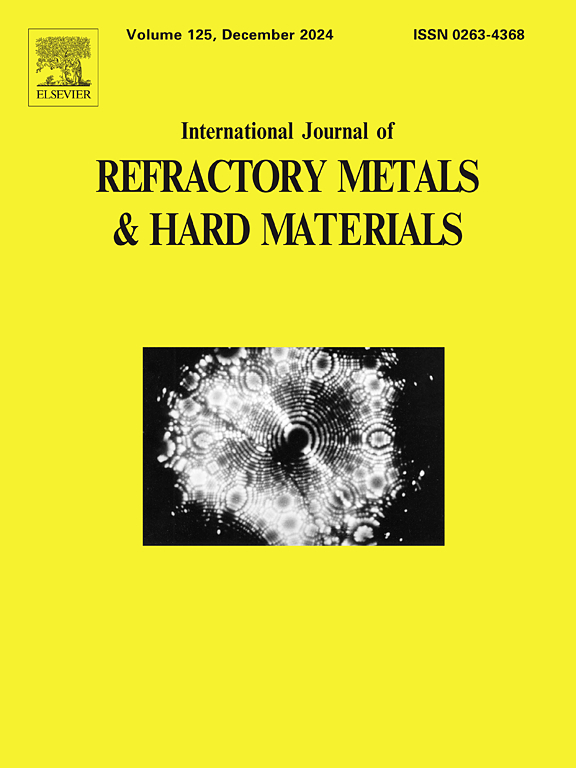Valorisation of hard metal wastes using organic acids in an eco-friendly process
IF 4.2
2区 材料科学
Q2 MATERIALS SCIENCE, MULTIDISCIPLINARY
International Journal of Refractory Metals & Hard Materials
Pub Date : 2025-01-19
DOI:10.1016/j.ijrmhm.2025.107062
引用次数: 0
Abstract
The manufacturing of Hard Metals (HMs) faces significant challenges due to the critical shortage of its primary feedstocks, tungsten (W) and cobalt (Co). The rising demand for these metals, particularly cobalt in lithium-ion battery technology, has led to increased market volatility and pricing concerns. To address these issues, leveraging metal-containing HM waste as secondary resources presents a sustainable solution, aligning with the circular economy model advocated by European Directives. This study introduces a novel hydrometallurgical process utilizing low-cost, biodegradable organic acids for the recovery of critical metals from HM scraps, particularly focusing on materials derived from the pyrometallurgical oxidation, reduction, and carburization (ORC) process. Organic acids, obtainable from agro-industrial waste through cost-effective biological methods, have demonstrated effectiveness as selective leaching agents for cobalt from WC-Co materials.
In this paper the use of lactic acid leaching solutions on oxidized powders, predominantly composed of CoWO4 and WO3, generated in the first ORC stage, is discussed. The findings reveal that these solutions facilitate the dissolution of critical metals under eco-friendly conditions, highlighting the potential of the Bio-derived Chemicals Recycling (BioCR) process. An empirical model for predicting the Co content in the recycled HM, is here proposed and applied for validation. This approach not only valorises organic waste but also yields high-quality materials suitable for reintegration into the HM manufacturing chain. Our results support the development of integrated systems that enhance resource recovery and mitigate waste management issues, fostering sustainability and circular economy principles while allowing for tailored W:Co ratios in recycled materials.
求助全文
约1分钟内获得全文
求助全文
来源期刊
CiteScore
7.00
自引率
13.90%
发文量
236
审稿时长
35 days
期刊介绍:
The International Journal of Refractory Metals and Hard Materials (IJRMHM) publishes original research articles concerned with all aspects of refractory metals and hard materials. Refractory metals are defined as metals with melting points higher than 1800 °C. These are tungsten, molybdenum, chromium, tantalum, niobium, hafnium, and rhenium, as well as many compounds and alloys based thereupon. Hard materials that are included in the scope of this journal are defined as materials with hardness values higher than 1000 kg/mm2, primarily intended for applications as manufacturing tools or wear resistant components in mechanical systems. Thus they encompass carbides, nitrides and borides of metals, and related compounds. A special focus of this journal is put on the family of hardmetals, which is also known as cemented tungsten carbide, and cermets which are based on titanium carbide and carbonitrides with or without a metal binder. Ceramics and superhard materials including diamond and cubic boron nitride may also be accepted provided the subject material is presented as hard materials as defined above.

 求助内容:
求助内容: 应助结果提醒方式:
应助结果提醒方式:


